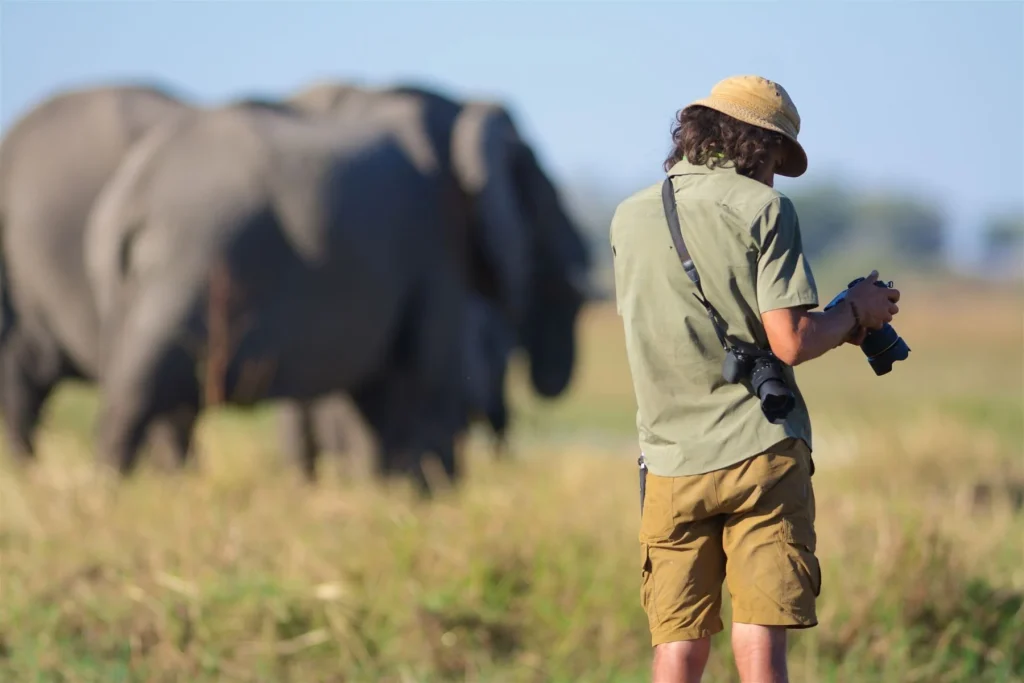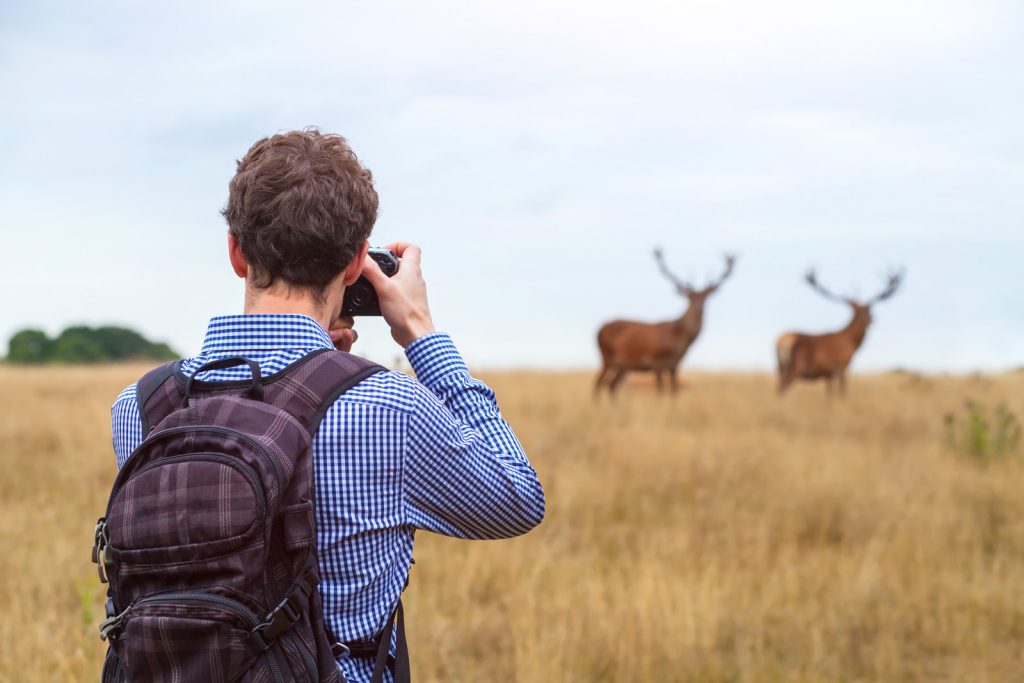
Time to stand up for wildlife
The techniques of wildlife photography differ greatly from those used in landscape photography. For example, in wildlife photography wide apertures are used to achieve a fast shutter speed, freeze the subject’s motion, and blur the backgrounds, while landscape photographers prefer small apertures to keep the entire frame in focus. Wildlife is also usually shot with long telephoto lenses from a great distance; the use of such telephoto lenses frequently necessitates the use of a tripod (since the longer the lens, the harder it is to handhold). Many wildlife photographers also use blinds or camouflage in order to get closer to their subjects and capture more appealing shots without scaring the animals or causing a shift in behavior in them, a method that was developed early on, since camera lenses were not developed enough to take quality photos over long distances.
Many photographers record images of the texture in a stone, tree bark, leaf, or any of other small scenes. Many of these images are abstract. Tiny plants and mushrooms are also popular subjects. Close-up nature photography doesn’t always need a true macro lens; however, the scenes here are small enough that they are generally considered different from regular landscapes.
Macro photography employs texture and close-up photography to allow people to see things they wouldn’t be able to see with the naked eye and create a new perspective for viewers.

Macro photography employs texture and close-up photography to allow people to see things they wouldn’t be able to see with the naked eye and create a new perspective for viewers.
Cloudscape photography or cloud photography is the photography of the clouds or sky.
Cloudscape photography allows photographers to capture photographs of clouds’ movement and dynamic nature. It is ever-changing and seen often in photography. Clouds and their fickle nature create an outlet for photos to appear more dramatic and intense. Cloudscape photography can be used in tandem with many other types of nature photography, including landscape, storm, animal, outdoor architectural, and plant photography. Clouds come in many shapes and types, including cumulus, cumulonimbus, stratus, and stratocumulus. These different varieties allow photographers to take in various styles and concepts. Cloudscape photographers will also focus on the time of day and weather they photograph to achieve different effects.
